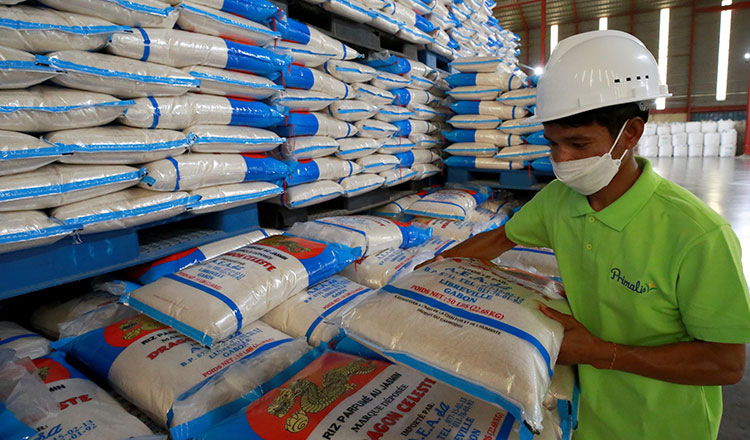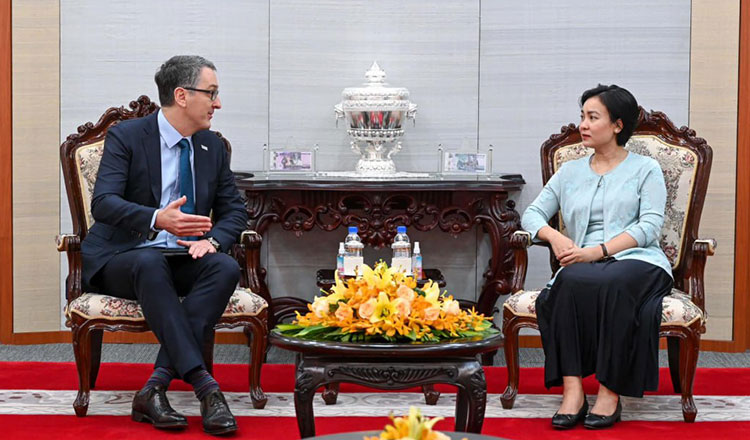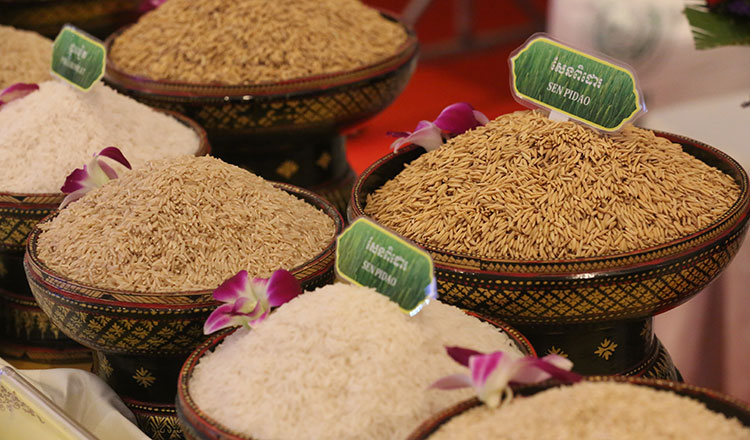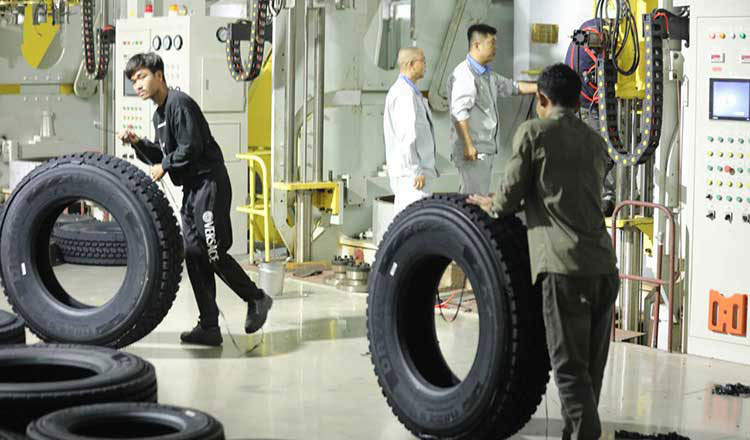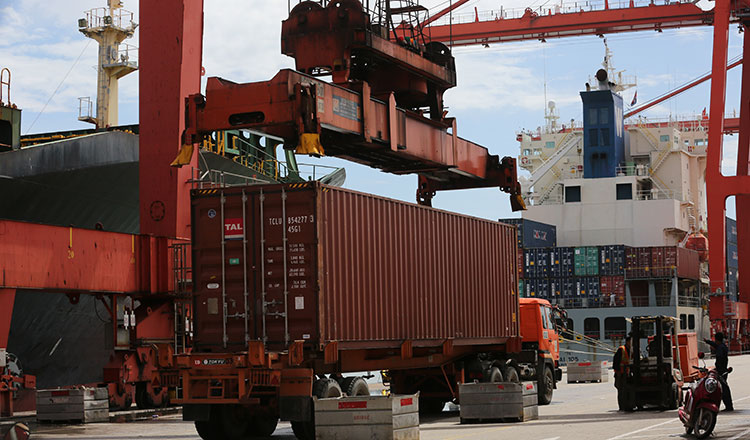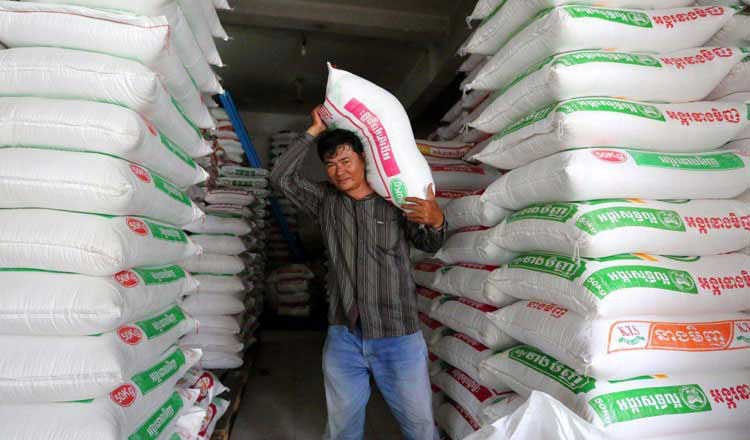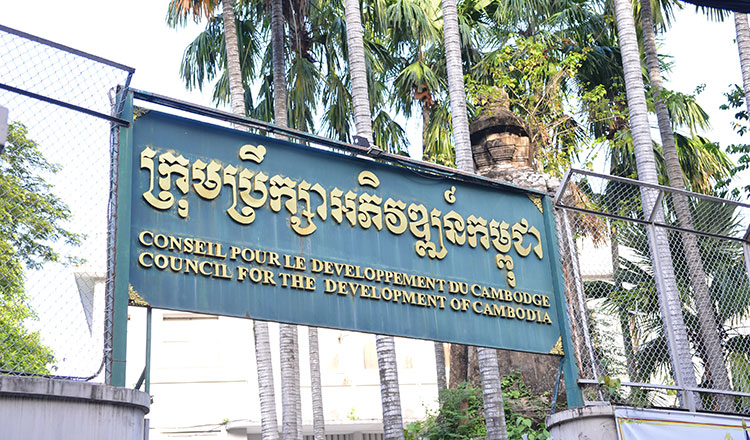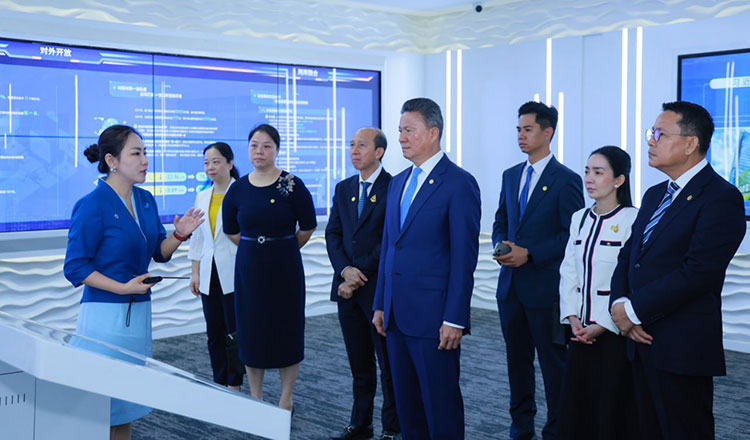PM inaugurates new container terminal at PAS
PM inaugurates new container terminal at PAS
Prime Minister Hun Manet yesterday inaugurated a new container terminal at the Sihanoukville Autonomous Port (PAS), significantly boosting the port’s capacity to handle containers.
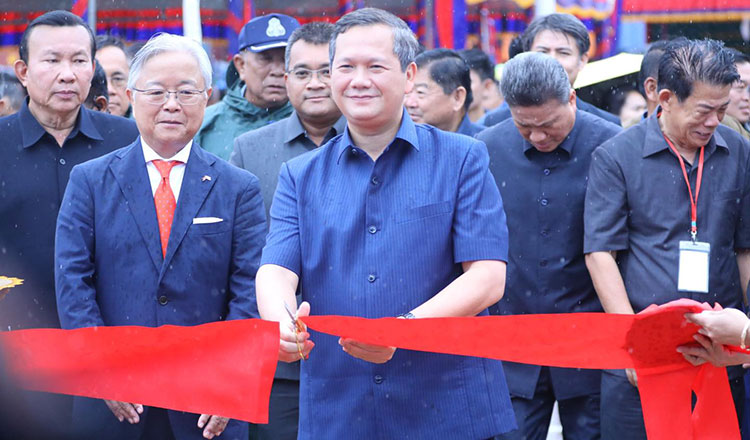
He said, “With continued achievements, Sihanoukville Autonomous Port will become a regional logistics hub, a location for the transfer and loading of goods in and out of ports around the world.”
Sihanoukville Autonomous Port is the only deep-sea port in Cambodia that has been playing an important role in contributing to the development of the country through business revenue resulting from the growing volume of goods and containers passing through, the premier said.
Mr Hun Manet said, “The expansion of the port capacity of Sihanoukville Autonomous Port is a reflection of the strengthening of Cambodia’s economic base, the expansion of port capacity connected with the transport infrastructure system is to help Cambodia’s logistics system better.”
The inauguration ceremony was attended by several high-ranking government officials. Ambassador of Japan to Cambodia Ueno Atsushi was also present on the occasion.
The new facility is expected to increase the port’s annual container handling capacity to a remarkable 1 million TEUs (Twenty-Foot Equivalent Units).
This 11.5m-deep terminal is equipped with container handling equipment, including two QC loading containers and six RTG loading containers.
The container terminal cost $37.5 million with about $10 million concession loan from Japan, $27.5 million from PAS’s revenue and other funds from the government, according to the Ministry of Public Works and Transport.
With the addition of this new container terminal, PAS will increase its capacity from 550,000 TEUs a year to one million TEUs per year, the ministry said, adding that the new container terminal allows 10.4-meter-deep vessels to dock off.
The additional terminal would increase the port’s capacity to handle the proportion of the world’s shipping from 18 percent to about 38 percent and 49.25 percent of the vessels operating in the Asia-Pacific region.
The terminal was built by the Japanese company TOA Corporation and technically supervised by Nippon Koei and Oriental Consultants Global.
Ambassador Ueno recalled the agreement reached between leaders of the two countries in developing Sihanoukville Port so that it can fulfill its potential as not just the biggest port of Cambodia but a port that can serve the wider region.
Sihanoukville Port has always been at the center of Japan-Cambodia cooperation, Ambassador Ueno said during the inauguration ceremony.
“The Government of Japan will continue to cooperate with the Cambodian side on further expansion and improvement of Sihanoukville Port, in accordance with the Pentagonal Strategy Phase I,” he said.
Both governments have been discussing the application of the Free Port Concept to Sihanoukville Port. With this goal in mind, AEON Mall Logi-Plus of Japan constructed a new logistics warehouse, which went operational last year, inside the SEZ located next to this port.
Additional container terminals will provide additional options to complement the functions of the Sihanoukville Autonomous Port in order to expand capacity and modernize ports in response to current container traffic growth, the premier said.
The new container terminal is part of a larger plan to modernize and expand the Sihanoukville Autonomous Port as projects of the new three-step deep-water container port are on the plan of construction.
The first phase of a new deep-water container port construction started last December will be completed by 2025. With 350 meters in length and 14.50 meters in depth, it will allow larger container vessels with a capacity of 60,000 deadweight tonnage (DWT) (approximately 4,000 TEUs) to dock at the port.
The second phase of the port expansion project is expected to be completed in 2028 and it will increase the container capacity of the port to 120,000 DWT (approximately 10,000 TEUs).
The third phase, to be completed in 2029, will further boost the capacity to 1,60,000 DWT (15,000 TEUs) and will expand the shipping network to cover Europe and North America regions as well.
In the first eight months of 2024, PAS handled throughput of more than 668,000 TEUs, a year-on-year increase of 29 percent and earned income of $77 million, a year-on-year increase of 26 percent, PAS’s report showed recently.
The port handled 800,000 TEUs in 2023, shipping 19 million tonnes of goods and generating more than $95 million in revenues.



